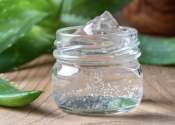Researchers create power-generating, gel electret-based device for wearable sensors
A team of researchers from NIMS (National Institute for Materials Science), Hokkaido University and Meiji Pharmaceutical University has developed a gel electret capable of stably retaining a large electrostatic charge. The ...









